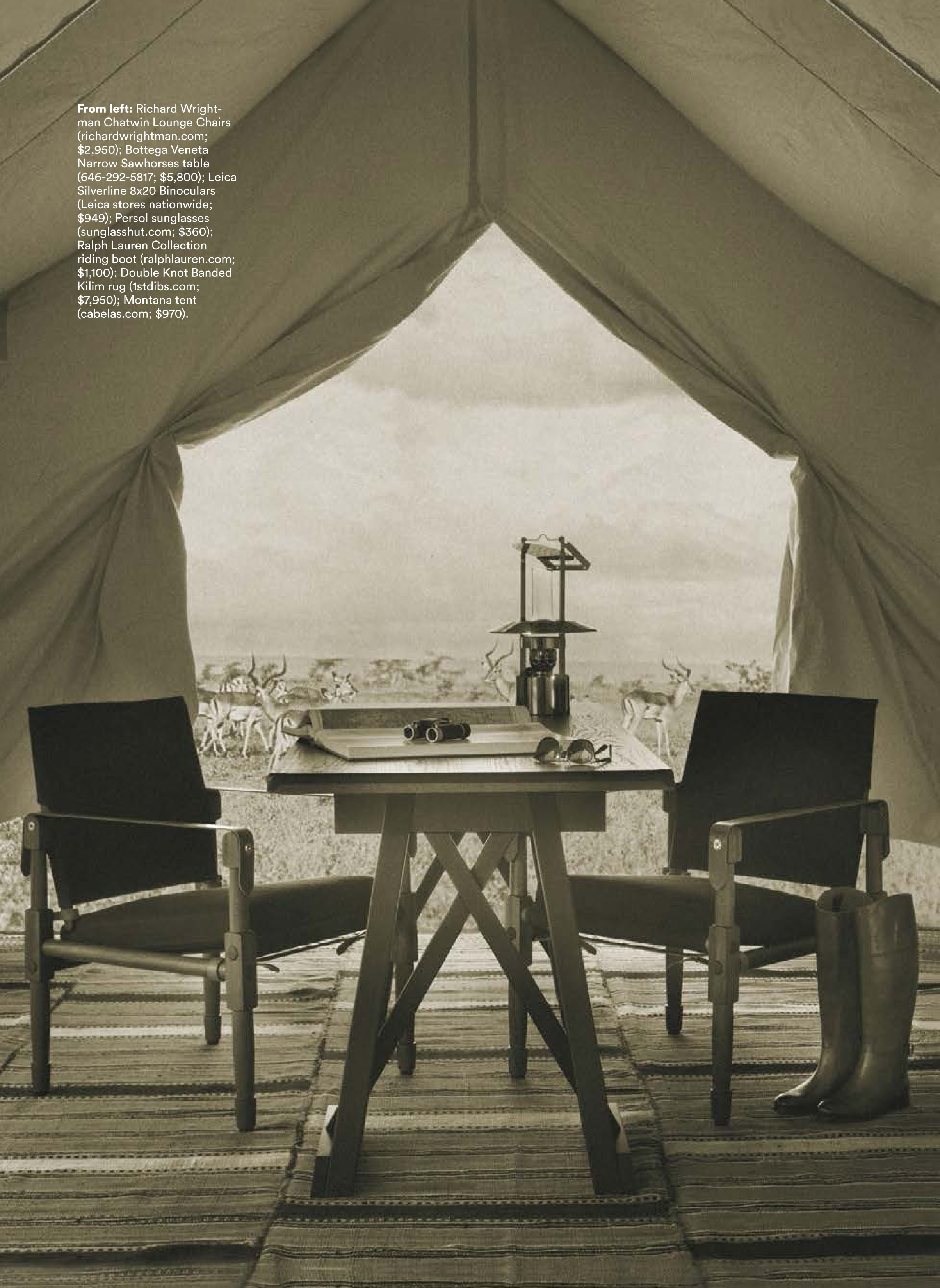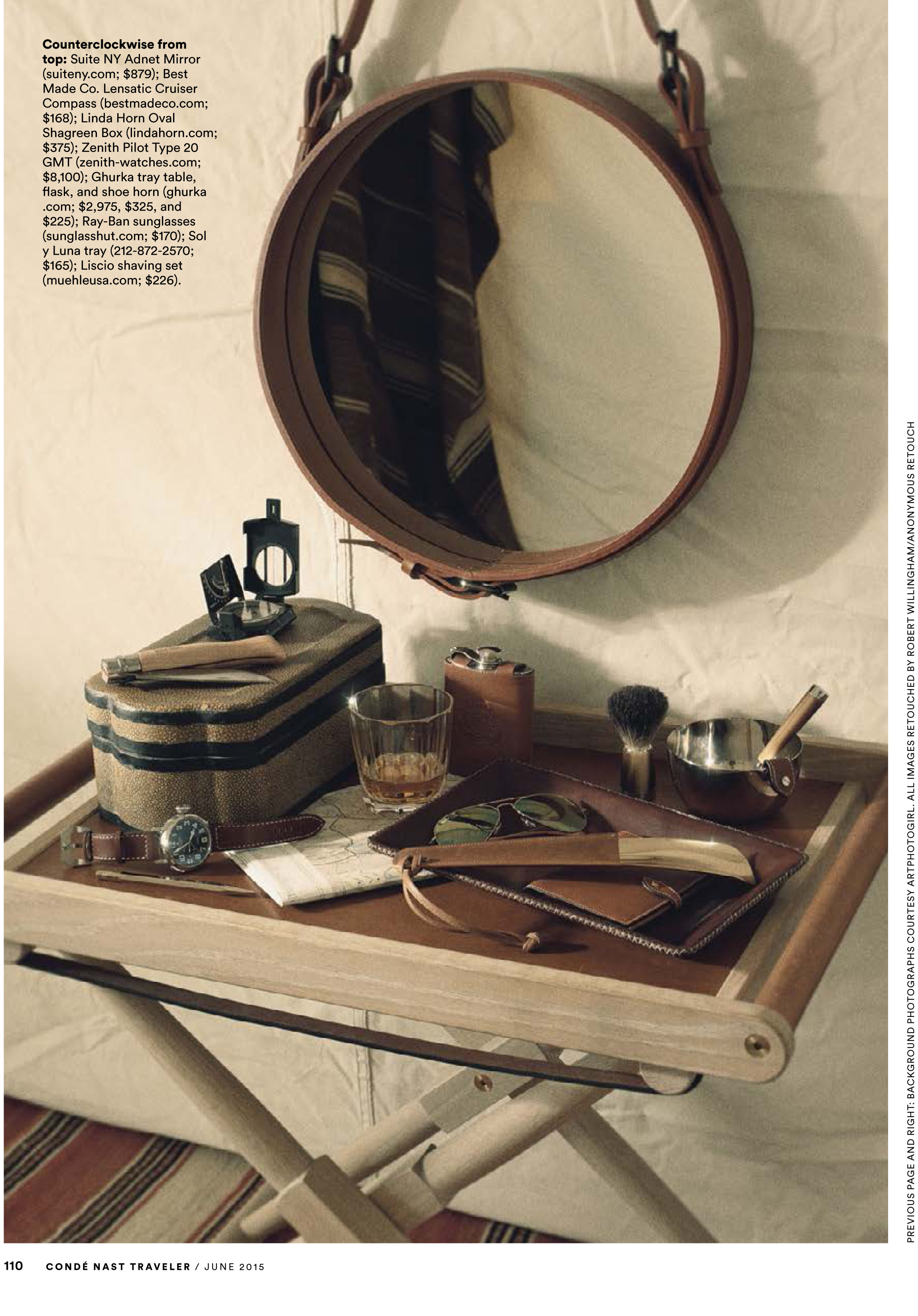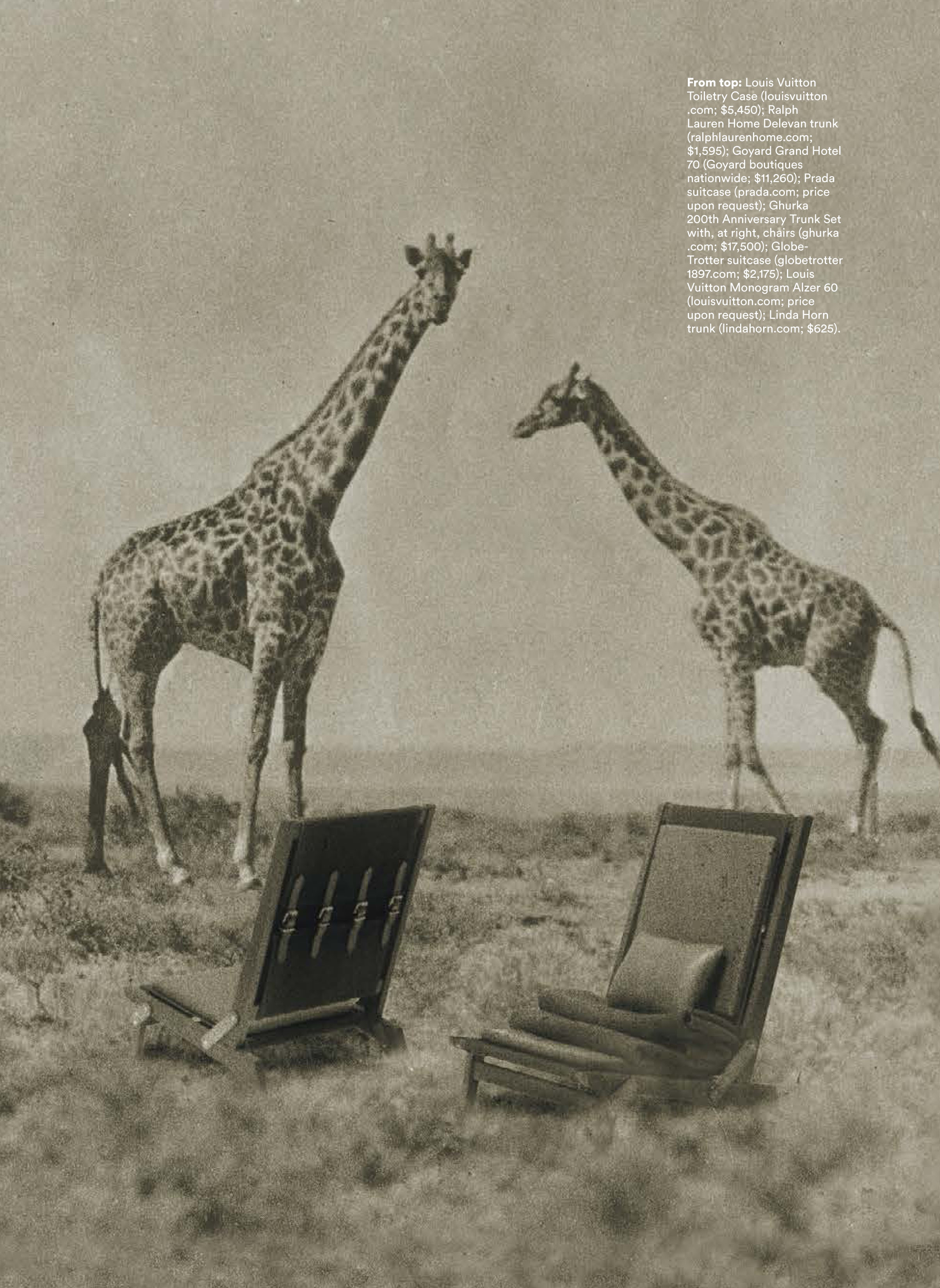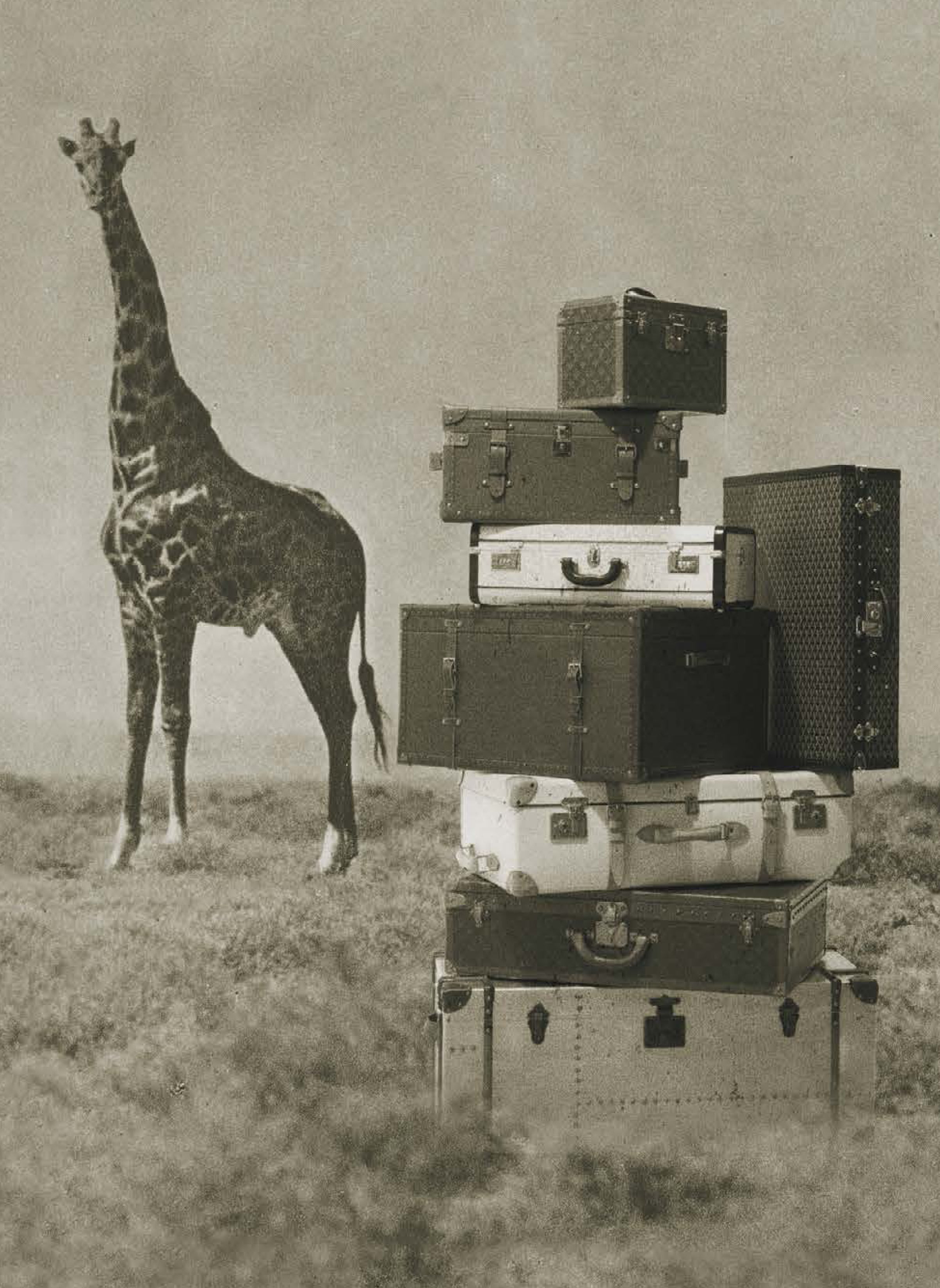The Things We Carry
Inspired by the great expeditions at the turn of the century, the latest incarnations of campaign furniture pay homage to life under the canvas while reading utterly modern in both function and beauty.
By Michael Hainey
Produced by Michael Reynolds / Photographed by Anthony Cotsifas
Prop styling by Eugenia Santiesteban Soto
Much like the Land Rover, which began as something that was entirely utilitarian—away for enterprisingBrits to bring comfort to their far-flung travels in the African bush or the rugged terrain of India—campaign furniture has been not just fancied up but embraced far beyond its original habitat. Now you’re as likely to see a Ralph Lauren traveling-bar case in the town houses of Kensington as you are on the plains of Kenya. “Campaign is timeless,” says New York furniture maker Richard Wrightman, whose father’s campaign collection inspire his own line. “It evokes the romance of travel, the distant lands that inhabit our memories and imagination.”
The gear—also known as “knockdown” furniture—has been around for centuries, in some form or another. It’s argued that Roman armies underJulius Caesar were among the first to make folding portable pieces that officers could transport into battle (field desks and chairs, tables on which they could spread out maps and plot their conquests).By the eighteenth century, when the Brits were tromping about the globe, planting flags and expanding their own empire, prominent furniture designers like Chippendale, Hepplewhite, andSheraton were all making the stuff. No unit or scientific expedition (think Darwin on the H.M.S.Beagle) could operate without the versatility and the storage it provided.
When tanks and mechanized infantry ultimately made mobility in battle much more of a priority, the idea of transporting whole rooms fell out of favor in the military. But that didn’t keep fashion houses from wanting to experiment with the form’s portability and to accommodate this new age of exploration: Hermès (known for crafting custom cases for Out of Africa author Karen Blixen), Louis Vuitton, and Goyard pioneered the Parisian luggage trade, making trunks sturdy enough to be roughly handled by porters on countless transatlantic crossings.
Even today, many people don’t realize that modern classics like Le Corbusier’s Basculant chair and Marcel Breuer’s Wassily chair were highly influenced by the campaign tradition. And after decades of ubiquitous sleek minimalism, functional pieces like the Roorkhee chair (invented for the British army and named in honor of the headquarters of the Indian Army Corps of Engineers at Roorkhee) feel new again. “I’ve seen battered examples in weathered wood and beaten canvas,” says Wrightman of the Roorkhee, which he made a version of for his recent collaboration with Ghurka. “And they still look incredibly handsome.”





